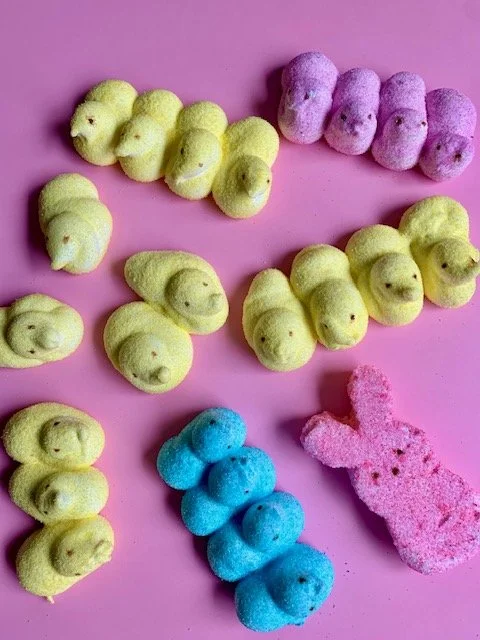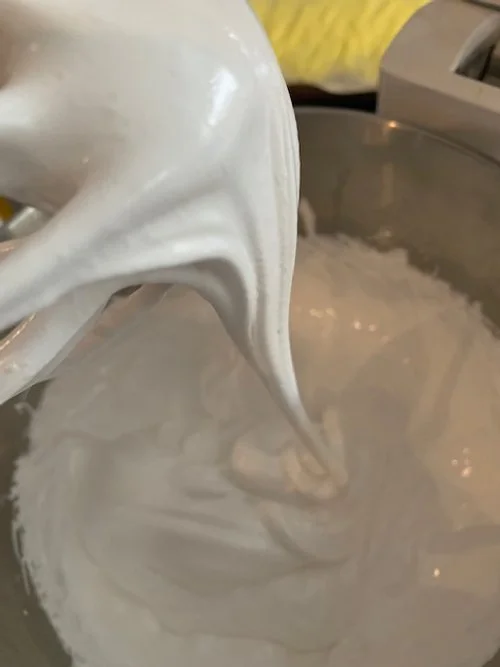Marshmallows 101: Tips & Troubleshooting
Is there anything more magical than turning sugar, water, and gelatin into a big, bouncy cloud of sweetness? Making marshmallows at home feels like pulling off a kitchen magic trick. But if you've ever ended up with a sticky mess or something that could double as packing foam… you’re not alone.
I’ll break down for you the marshmallow-making process, common issues, and how to know when you've nailed it—without the stress.
What’s Actually Happening When You Make Marshmallows?
At its core, marshmallow making is about turning sugar syrup and gelatin into a stable foam. You heat sugar, corn syrup, and water to a specific temperature (usually around 240°F / soft ball stage) and then whip it together with bloomed gelatin. The whipping incorporates air, the gelatin traps that air, and the sugar syrup sets everything in place.
Simple, right? Well... kinda. Let’s talk about where things can go sideways.
Common Marshmallow Mishaps (And How to Fix Them)
1. Under-Whipping: The Gooey Blob Problem
What happens: You stop whipping too soon, and the mixture is still too runny. It pours into your pan like thick syrup and never really sets up right. You’ll cut into it hours later and find something that's more like sticky taffy than fluffy marshmallows.
Why: The marshmallow hasn’t incorporated enough air, and the gelatin hasn’t cooled enough to start setting.
How to fix: Whip longer! You’re looking for the mixture to triple in volume, turn opaque white, and hold soft but distinct peaks. It should be thick enough that when you lift the whisk, ribbons of marshmallow slowly cascade back down, not immediately sink.
2. Over-Whipping: Dry and Crumbly City
What happens: You walk away from the mixer, and next thing you know, your marshmallow batter is thick like spackle. It’s too stiff to spread evenly in the pan, and once it sets, it’s dry and almost chalky instead of soft and pillowy.
Why: Over-whipping means you've beaten out too much moisture. As it cools, it sets up too fast, leaving little room to spread and smooth it.
How to fix: Stop whipping once the marshmallow is thick but still pourable. If you have to wrestle it out of the bowl, you've gone a little too far. Get it into a pan as best as you can and let it set. It will still be edible, but you’ll probably want to try again.
3. Sugar Syrup Issues: The Undercooked & Overcooked Dilemma
If your syrup doesn’t hit that 240°F mark, your marshmallows won’t set properly—they'll stay soft, sticky, and won’t hold their shape.
Go too far past 250°F? You'll end up with marshmallows that are too firm and might have a chewy, almost caramel-like bite. Not terrible, but not what we’re going for!
This is what caramel cooked to 240F, the soft ball stage looks like. Notice how the candy can form a ball, but is soft and misshapen. This is what we want for perfect marshmallows!
Pro Tip:
Invest in a reliable candy thermometer (and double-check it’s calibrated!). The temperature of your syrup is everything. For more info on the different stages of cooking sugar and thermometers, check out my post here.
How to Tell When Your Marshmallows Are Ready
Here’s your marshmallow checklist:
✅ The mixture has tripled in volume.
✅ It’s glossy white and holds soft peaks.
✅ It’s thick but still pourable (slow-moving ribbons, not cement).
✅ The bowl feels just slightly warm to the touch—not hot.
If all of that checks out, you’re set. Pour it into a well-dusted pan (don’t forget the powdered sugar + cornstarch mix!), smooth it out, and let it rest for at least 4-6 hours, or overnight.
Tripled in volume? Check
Glossy? Check.
Soft peaks? Check.
Slow moving ribbons that don’t disappear? Check.
Final Tips for Marshmallow Success
Bloom your gelatin properly.
Sprinkle it evenly over cold water and let it soak—don’t dump it in all at once.Work quickly but calmly.
Once you stop whipping, move fast to spread it in your pan. It sets up faster than you think!Dust generously.
Marshmallows love to stick. Powdered sugar and cornstarch are your best friends.Flavor fun!
Add vanilla, peppermint, or even a swirl of cocoa powder at the end of whipping. Homemade marshmallows are the perfect blank canvas.
Remember:
Under-whipped = gooey, sticky mess.
Over-whipped = dry, stiff blocks.
Perfectly whipped = soft peaks, thick but pourable, glossy magic.
Once you get a feel for the process, it becomes second nature. And trust me—once you've had a fresh, homemade marshmallow, you'll never want to go back to the bagged stuff again.
Ready to start marshmallow making?
Check out my recipe for Vanilla Marshmallows.
For a fun Easter project, check out my digital download for Homemade Peeps.
Hey, I’m Kim!
After a lot of practice (and a few sticky disasters), I’ve crafted a delicious selection of lollies and mastered a ton of candy making tips to share with you—lump free. (You’re welcome.)







